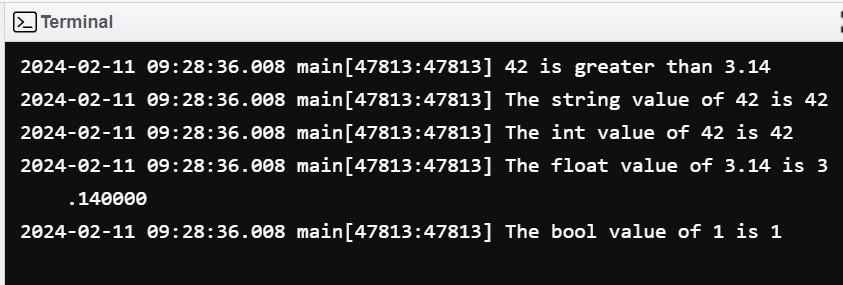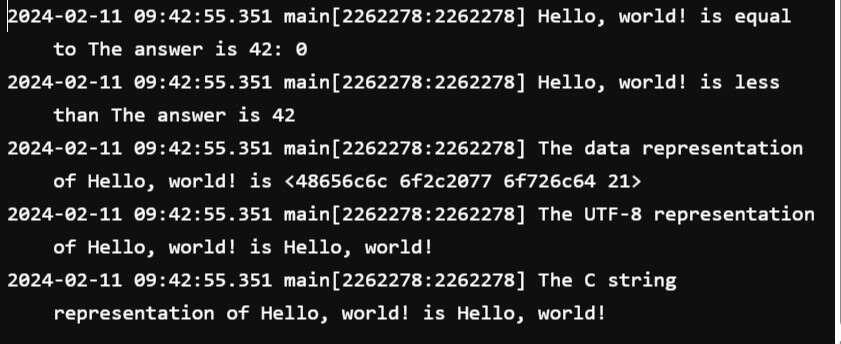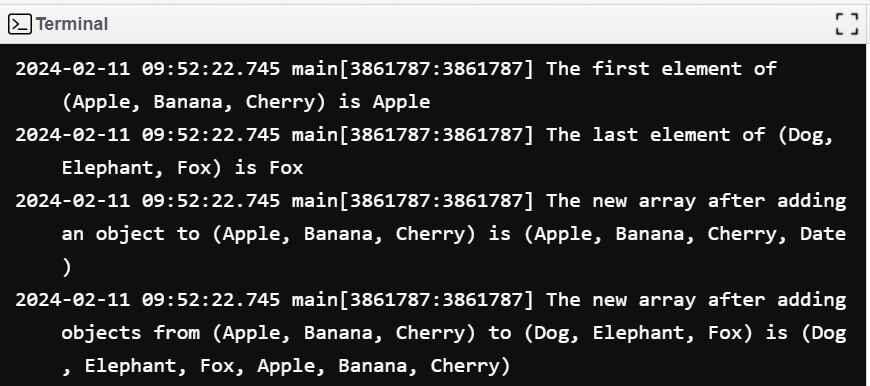Foundation Framework in Objective-C
Last Updated :
07 Mar, 2024
The Foundation framework is the basic foundation for your applications. It contains fundamental components, which are meant to serve as guidelines. The Foundation library of the Foundation framework creates common data types for you that you frequently use. The String, Files, Date, Timer, Thread, and other such available objects are found here. The Toolkit Basis together with more activities frequently offers all possible amenities for using these things such as memory management, serialization, localization, and networking. This article focuses on discussing the Foundation Framework in detail.
Types and Subtypes of Foundation Framework
The table below displays the major stages and their particular variations based on the network model by the Foundation.
| Type |
Subtype |
Description |
| Classes |
NSObject |
This class is the root type of almost all Objective-C classes. Prefers providing behavior and interface essentials to objects. |
| Classes |
NSNumber |
We will create a class which is a number of the types of primitive types, such as int, float, double, bool, etc. |
| Classes |
NSString |
An Object class that takes characters in a Unicode string. Strings are created, modified, compared, and searched with implemented methods. |
| Classes |
NSArray |
A class , which creates a sequential ordering of objects. Introduces the ways of making, retrieving data from, and even editing arrays to be performed with a single command. |
| Classes |
NSDictionary |
The class of an unordered collection of key-value pairs, the pair container. People learn how to develop dictionaries, or dictionaries that can be accessed, modified or iterated. |
| Classes |
NSSet |
A class that represents an unordered collection of distinct objects. Provides methods for creating, accessing, modifying, and iterating over sets. |
| Classes |
NSData |
A class that represents a collection of bytes. Provides methods for creating, accessing, modifying, and converting data. |
| Classes |
NSDate |
A class that represents a point in time. Provides methods for creating, comparing, and manipulating dates. |
| Classes |
NSTimer |
A class that represents a timer that fires after a certain interval. Provides methods for creating, scheduling, and invalidating timers. |
| Classes |
NSThread |
A class that represents a thread of execution. Provides methods for creating, managing, and synchronizing threads. |
| Classes |
NSFileHandle |
A class that represents a file or a socket. Provides methods for reading, writing, and seeking data. |
| Classes |
NSFileManager |
A class that provides access to the file system. Provides methods for creating, moving, copying, deleting, and enumerating files and directories. |
| Classes |
NSUserDefaults |
A class that provides access to the user defaults system. Provides methods for storing and retrieving user preferences and settings. |
| Classes |
NSNotification |
A class that represents a message that is broadcast to interested observers. Provides methods for creating and posting notifications. |
| Classes |
NSNotificationCenter |
A class that manages the notification system. Provides methods for registering and unregistering observers, and sending and receiving notifications. |
| Protocols |
NSCopying |
A protocol that defines a method for creating a copy of an object. Any class that wants to support copying must adopt this protocol and implement this method. |
| Protocols |
NSCoding |
A protocol that defines methods for encoding and decoding objects. Any class that wants to support archiving and unarchiving must adopt this protocol and implement these methods. |
| Protocols |
NSLocking |
A protocol that defines methods for locking and unlocking objects. Any class that wants to provide thread synchronization must adopt this protocol and implement these methods. |
| Protocols |
NSFastEnumeration |
A protocol that defines a method for enumerating over a collection of objects. Any class that wants to support fast enumeration must adopt this protocol and implement this method. |
| Categories |
NSString+NSPathUtilities |
A category that adds methods to the NSString class for working with file paths. Provides methods for creating, manipulating, and extracting components of file paths. |
| Categories |
NSArray+NSPredicate |
A category that adds methods to the NSArray class for filtering and sorting arrays using predicates and sort descriptors. Provides methods for creating, applying, and evaluating predicates and sort descriptors. |
| Categories |
NSObject+NSKeyValueCoding |
A category that adds methods to the NSObject class for accessing and modifying the properties of an object using key-value coding. Provides methods for getting, setting, and validating values for keys. |
| Functions |
NSLog |
A function that prints a formatted message to the standard output or the console. Useful for debugging and logging purposes. |
| Functions |
NSMakeRange |
A function that creates and returns an NSRange structure that represents a range of values. Useful for working with strings, arrays, and other collections. |
| Functions |
NSClassFromString |
A function that returns the Class object that corresponds to a given string. Useful for creating objects dynamically. |
| Functions |
NSSelectorFromString |
A function that returns the SEL object that corresponds to a given string. Useful for creating selectors dynamically. |
| Functions |
NSHomeDirectory |
A function that returns the path to the current user’s home directory. Useful for accessing user-specific files and directories. |
Syntax and Keywords
The following table summarizes the syntax and keywords related to the Foundation framework in Objective-C:
| Syntax/Keyword |
Description |
#import <Foundation/Foundation.h> |
A directive that imports the header file of the Foundation framework. This should be included at the beginning of any file that uses the Foundation framework. |
@interface ClassName : SuperClassName <ProtocolName> |
A declaration that defines the interface of a class that inherits from a super class and adopts a protocol. |
@end |
A declaration that marks the end of the interface or implementation of a class or a protocol. |
@implementation ClassName |
A declaration that defines the implementation of a class. |
@synthesize propertyName |
A directive that generates the getter and setter methods for a property. |
@dynamic propertyName |
A directive that indicates that the getter and setter methods for a property are provided at runtime. |
@property (attributes) type name |
A declaration that defines a property of a class. The attributes specify the memory management, atomicity, and access control of the property. |
self |
A keyword that refers to the current object. |
super |
A keyword that refers to the super class of the current object. |
nil |
A constant that represents a null pointer. |
YES |
A constant that represents a Boolean true value. |
NO |
A constant that represents a Boolean false value. |
NSLog(@"format", arguments) |
A function that prints a formatted message to the standard output or the console. The format is a string that contains placeholders for the arguments. The arguments are the values that replace the placeholders. |
NSMakeRange(location, length) |
A function that creates and returns an NSRange structure that represents a range of values. The location is the starting point of the range. The length is the number of values in the range. |
NSClassFromString(@"className") |
A function that returns the Class object that corresponds to a given string. The className is the name of the class. |
NSSelectorFromString(@"selectorName") |
A function that returns the SEL object that corresponds to a given string. The selectorName is the name of the selector. |
NSHomeDirectory() |
A function that returns the path to the current user’s home directory. |
Examples
Here are some examples of the Foundation framework in Objective-C that demonstrate its usage and benefits.
Example 1: NSNumber Class
The NSNumber class is a class that represents a number of any primitive type, such as int, float, double, bool, etc. The NSNumber class allows you to store, manipulate, and compare numbers in a uniform and consistent way. The NSNumber class furthermore provides functions for converting numbers to and from different types and formats.
For example, the below code snippet illustrates how to use the NSNumber class for creating numbers, comparing them, as well as for conversion.
ObjectiveC
#import <Foundation/Foundation.h>
int main(int argc, const char * argv[]) {
NSAutoreleasePool *pool = [[NSAutoreleasePool alloc] init];
NSNumber *intNumber = [NSNumber numberWithInt:42];
NSNumber *floatNumber = [NSNumber numberWithFloat:3.14];
NSNumber *boolNumber = [NSNumber numberWithBool:YES];
NSComparisonResult result = [intNumber compare:floatNumber];
if (result == NSOrderedAscending) {
NSLog(@"%@ is less than %@", intNumber, floatNumber);
}
else if (result == NSOrderedDescending) {
NSLog(@"%@ is greater than %@", intNumber, floatNumber);
}
else {
NSLog(@"%@ is equal to %@", intNumber, floatNumber);
}
NSString *intString = [intNumber stringValue];
int intVal = [intString intValue];
float floatVal = [floatNumber floatValue];
BOOL boolVal = [boolNumber boolValue];
NSLog(@"The string value of %@ is %@", intNumber, intString);
NSLog(@"The int value of %@ is %d", intString, intVal);
NSLog(@"The float value of %@ is %f", floatNumber, floatVal);
NSLog(@"The bool value of %@ is %d", boolNumber, boolVal);
[pool drain];
return 0;
}
|
Output:

Thus, comes to light the use case of the NSNumber class in the context of storing, manipulating and comparing the numbers in the same way as a uniform and consistent manner.
Example 2: NSString Class
The NSString class is a class that is used to denote the Unicode character string. The NSString class gives methods for producing, modifying, comparison, and searching strings. The NSString class in Objective-C offers conversions to and from different encodings and formats as well.
As example, the bellow code demonstrates the usage of NSString class to construct, compare and convert strings.
ObjectiveC
#import <Foundation/Foundation.h>
int main(int argc, const char *argv[]) {
NSAutoreleasePool *pool = [[NSAutoreleasePool alloc] init];
NSString *string1 = @"Hello, world!";
NSString *string2 = [NSString stringWithFormat:@"The answer is %d", 42];
NSString *string3 = [NSString stringWithContentsOfFile:@"/Users/Desktop/test.txt"
encoding:NSUTF8StringEncoding
error:nil];
BOOL isEqual = [string1 isEqualToString:string2];
NSLog(@"%@ is equal to %@: %d", string1, string2, isEqual);
NSComparisonResult result = [string1 compare:string2];
if (result == NSOrderedAscending) {
NSLog(@"%@ is less than %@", string1, string2);
} else if (result == NSOrderedDescending) {
NSLog(@"%@ is greater than %@", string1, string2);
} else {
NSLog(@"%@ is equal to %@", string1, string2);
}
NSData *data = [string1 dataUsingEncoding:NSUTF8StringEncoding];
NSLog(@"The data representation of %@ is %@", string1, data);
const char *utf8String = [string1 UTF8String];
NSLog(@"The UTF-8 representation of %@ is %s", string1, utf8String);
const char *cString = [string1 cStringUsingEncoding:NSASCIIStringEncoding];
NSLog(@"The C string representation of %@ is %s", string1, cString);
[pool drain];
return 0;
}
|
Output:

These highlight the capacity of the class NSString to develop, modify, and to match strs in an effortless way.
Example 3: NSArray Class
The class NSArray is a class that denotes an ordered collection of objects. The NSArray class offers methods of developing,processing, altering, and enumerating arrays. The NSArray class in addition to a number of methods that are used to filter and sort arrays with predicates and sort descriptors.
The code below demonstrates how to exploit the NSArray class which is applied to array creation, access and modification, as an example.
ObjectiveC
#import <Foundation/Foundation.h>
int main(int argc, const char *argv[]) {
NSAutoreleasePool *pool = [[NSAutoreleasePool alloc] init];
NSArray *array1 = [NSArray arrayWithObjects:@"Apple", @"Banana", @"Cherry", nil];
NSArray *array2 = [NSArray arrayWithObjects:@"Dog", @"Elephant", @"Fox", nil];
NSString *firstElement = [array1 objectAtIndex:0];
NSString *lastElement = [array2 lastObject];
NSLog(@"The first element of %@ is %@", array1, firstElement);
NSLog(@"The last element of %@ is %@", array2, lastElement);
NSArray *newArray1 = [array1 arrayByAddingObject:@"Date"];
NSArray *newArray2 = [array2 arrayByAddingObjectsFromArray:array1];
NSLog(@"The new array after adding an object to %@ is %@", array1, newArray1);
NSLog(@"The new array after adding objects from %@ to %@ is %@", array1, array2, newArray2);
[pool drain];
return 0;
}
|
Output:

This shows how the NSArray class is used to create, access and modify arrays clearly and quickly.
Conclusion
The framework of Foundation in Objective-C is the basic tool which provides a library of reusable code besides the common tasks, preserving time and efforts and offering solutions of typical problems and issues of application development. It involves the array of classes, which is employed for the purpose execution of different functions like handling of the data types such as strings as well as numbers and it involves the process of dealing with the files, timers, threads and the user preferences. This framework not only makes the application work reliable, efficient and secure, but also provides great features like unified memory management, serialization, localization and networking.
Share your thoughts in the comments
Please Login to comment...